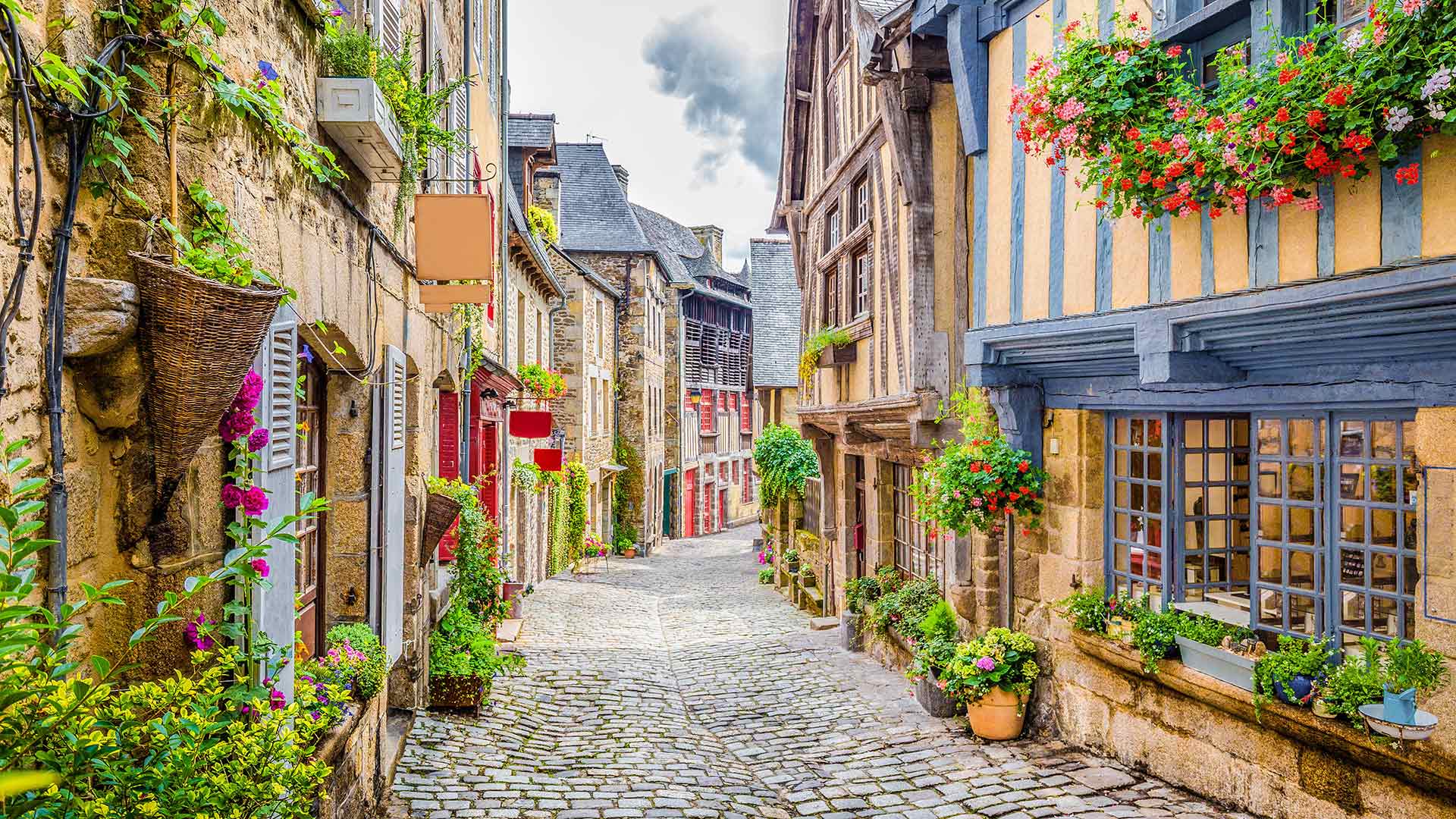蒙塔尔巴诺埃利科纳,意大利西西里岛 Montalbano Elicona, Messina, Sicily, Italy (© Antonino Bartuccio/SOPA Collection/Offset by Shutterstock)
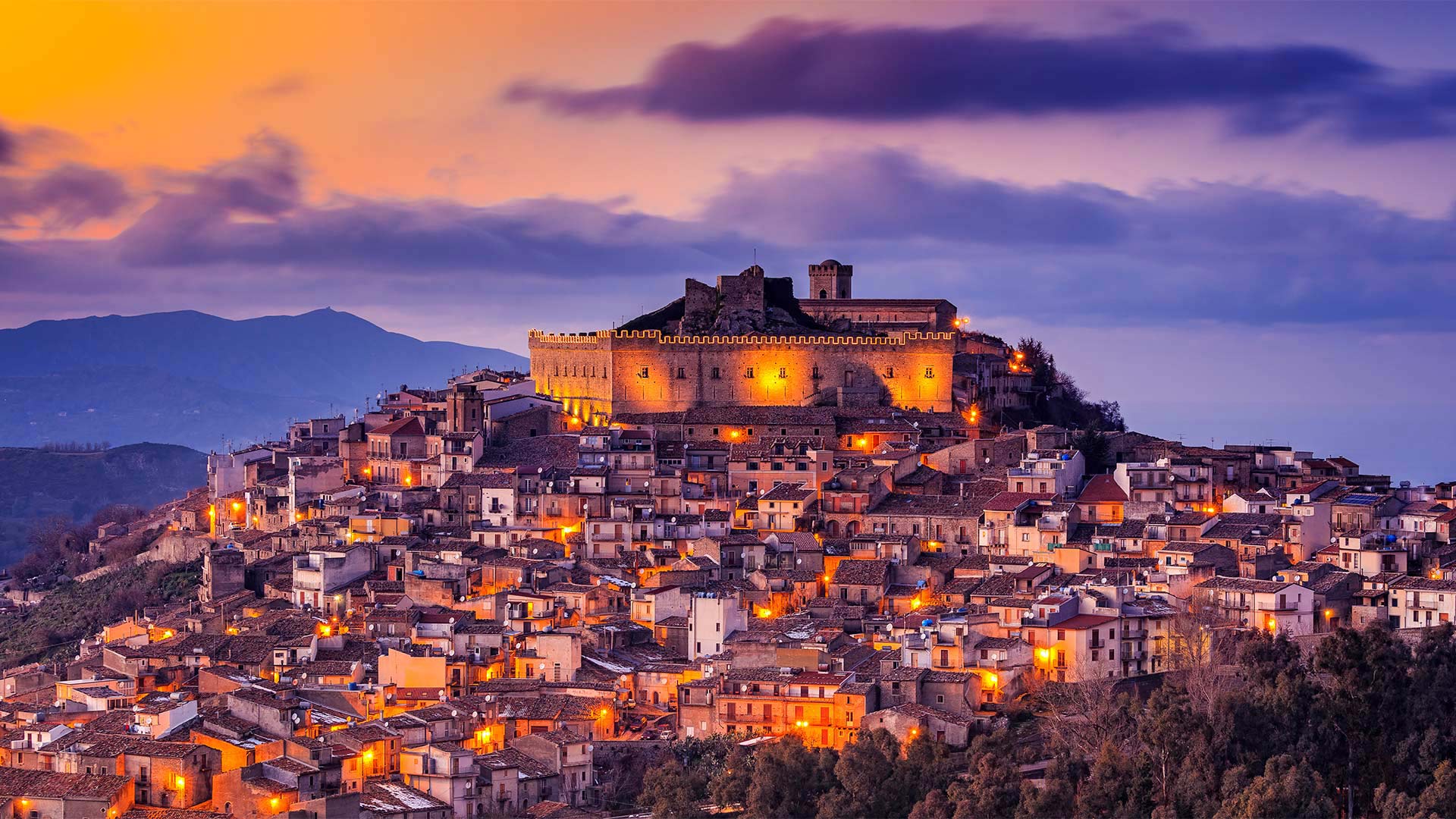
蒙塔尔巴诺埃利科纳,意大利西西里岛 Montalbano Elicona, Messina, Sicily, Italy (© Antonino Bartuccio/SOPA Collection/Offset by Shutterstock)
In Sicily, history is everywhere
Today we're in Montalbano Elicona on the island of Sicily. It's known for the very old castle at the crest of the hill, as well as the quaint medieval village below. It's no wonder that Montalbano Elicona has been called one of the most beautiful towns in all of Italy. The castle itself is believed to have been built in the 13th century by medieval power broker Frederick II of Swabia. He wore many hats, including King of Sicily, Holy Roman Emperor, and—as far-fetched as it sounds—the King of Jerusalem, a title he claimed after conquering that city during the Sixth Crusade. The castle was originally designed as a fortress, but it also served as a summer residence for Frederick and other rulers who followed him.
Surrounding the castle are several other interesting historical sites, including the Church of St. Catherine, known for its Romanesque portal built in the 14th century, its mix of Catalan and renaissance architecture, marble statues of St. Catherine and St. Nicholas Bishop, and a representation of the Last Supper by artist Guido Reni. Also of note is the nearby Argimusco plateau, where an array of large oblong stones, including one which is said to resemble an eagle, have long prompted speculation that they were placed there by members of a prehistoric island culture. However, scientists now believe that these so-called megaliths of Argimusco, sometimes referred to as the Stonehenge of Sicily, are actually of natural origin, and the unique boulder shapes are simply the result of centuries of wind erosion.
在西西里,历史无处不在
今天我们在西西里岛上的蒙塔尔巴诺埃利科纳。它以山顶上非常古老的城堡以及下面古色古香的中世纪村庄而闻名。难怪蒙塔尔巴诺·艾利科纳被称为意大利最美丽的城镇之一。城堡本身被认为是建于13世纪的中世纪权力掮客弗雷德里克二世的斯瓦比亚。他戴着许多帽子,包括神圣罗马皇帝西西里国王,以及听起来很牵强的耶路撒冷国王,这是他在第六次十字军东征中征服耶路撒冷后获得的头衔。这座城堡最初是作为要塞设计的,但它也作为弗雷德里克和其他跟随他的统治者的避暑住所。
城堡周围还有其他一些有趣的历史遗迹,包括圣凯瑟琳教堂(Church of St.Catherine),因其建于14世纪的罗马式大门而闻名,它融合了加泰罗尼亚和文艺复兴时期的建筑,圣凯瑟琳和圣尼古拉斯主教的大理石雕像,以及艺术家吉多·雷尼(Guido Reni)对《最后的晚餐》的描绘。同样值得注意的是附近的阿尔吉穆斯科高原,那里有一排长方形的大石头,其中一块据说像鹰,长期以来一直有人猜测它们是史前岛屿文化的成员放在那里的。然而,科学家们现在认为,这些所谓的阿吉姆斯科巨石,有时被称为西西里巨石阵,实际上是自然起源的,这些独特的巨石形状只是几个世纪风蚀的结果。
新河峡国家公园中的新河峡大桥,西弗吉尼亚州 New River Gorge Bridge in the New River Gorge National Park and Preserve, West Virginia (© Entropy Workshop/iStock/Getty Images Plus)
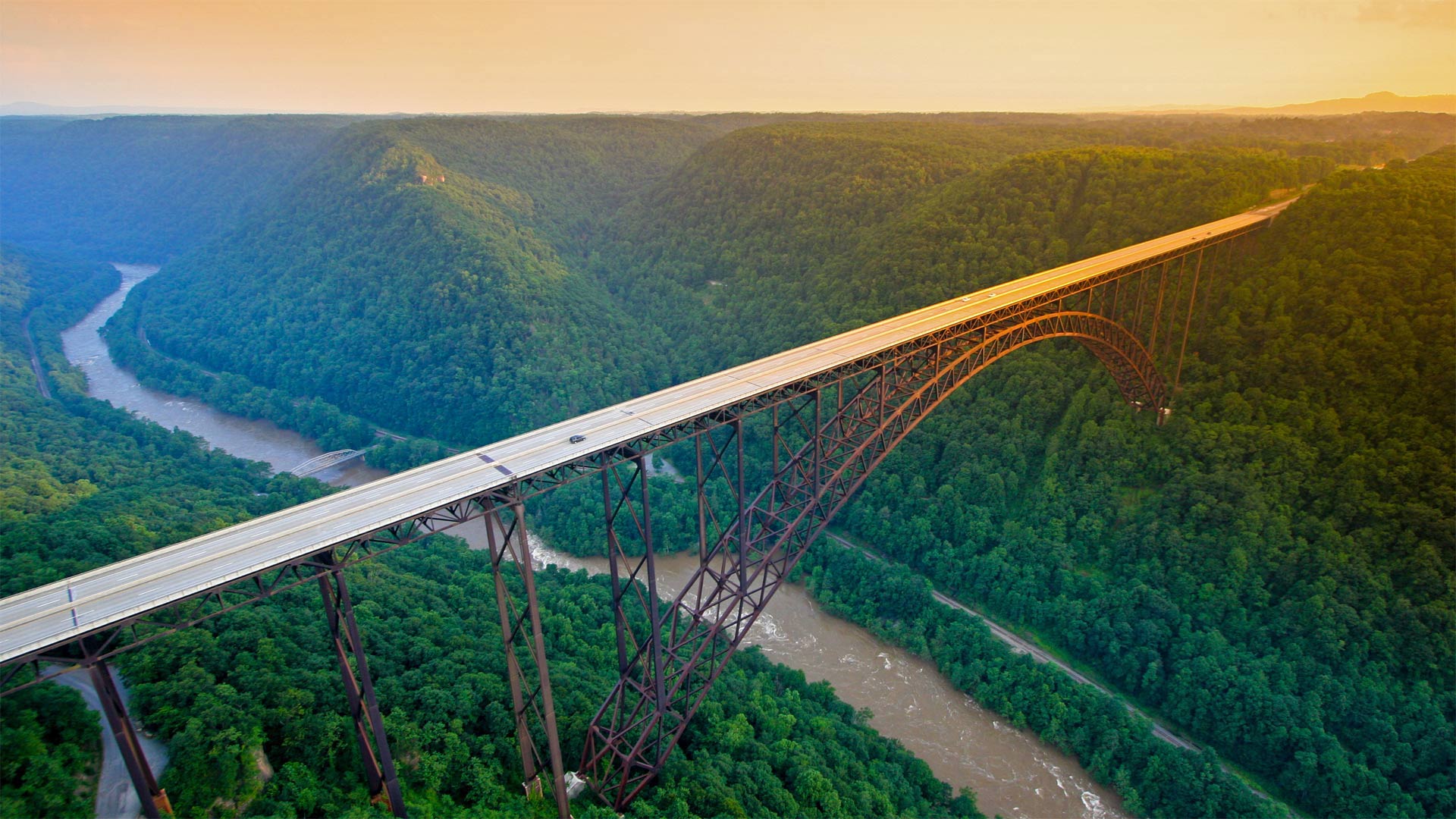
新河峡国家公园中的新河峡大桥,西弗吉尼亚州 New River Gorge Bridge in the New River Gorge National Park and Preserve, West Virginia (© Entropy Workshop/iStock/Getty Images Plus)
A river runs through it
To kick off National Park Week, which begins today, we're visiting America's newest national park, the New River Gorge National Park and Preserve, in West Virginia. This incredible view is of the New River Gorge Bridge, which, when completed in 1977, was the world's highest bridge carrying a regular roadway. It held that distinction for 24 years and is now a popular attraction for BASE jumpers and rappelers.
Far below the bridge is the New River, which—despite its name—is the second oldest river in the world. Its exact age is unknown, but geologists believe the New River is a segment of the preglacial Teays River, which fossil evidence suggests could be 320 million years old. Today, rafters and kayakers come to ride the New River rapids, which can reach a level of Class V, which means they're among the most difficult waters to navigate.
一条河穿过它
为了拉开今天开始的国家公园周的序幕,我们将参观美国最新的国家公园,西弗吉尼亚州的新河峡谷国家公园和保护区。这是令人难以置信的观点是新河峡谷大桥,这是在1977年建成时,世界上最高的桥梁进行定期道路。24年来,它一直保持着这一殊荣,现在已经成为跳垒和饶舌的热门景点。
桥下远处是新河,尽管它的名字是世界上第二古老的河流。它的确切年龄不得而知,但地质学家认为这条新河是前冰期Teays河的一段,化石证据表明这条河可能有3.2亿年的历史。今天,椽子和皮划艇来乘坐新的河流急流,这可以达到五级水平,这意味着他们之间的最困难的水域航行。
菲格雷斯的达利剧院博物馆, 西班牙 Dalí Theatre-Museum in Figueres, Spain (© Valerija Polakovska/Shutterstock)
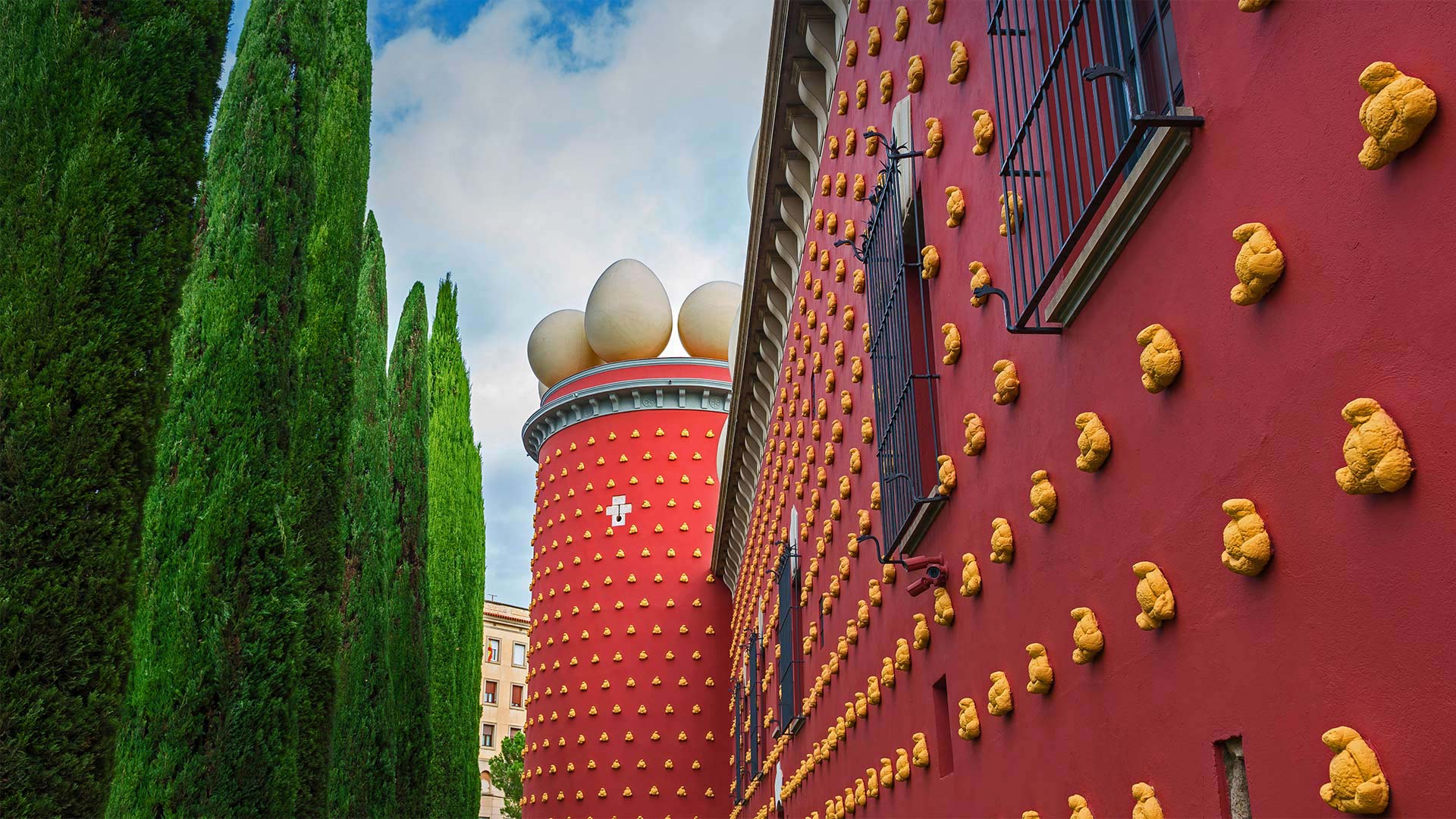
菲格雷斯的达利剧院博物馆, 西班牙 Dalí Theatre-Museum in Figueres, Spain (© Valerija Polakovska/Shutterstock)
'A theatrical dream'
The work of surrealist artist Salvador Dalí is the stuff of dreams: melting clocks, burning giraffes, weird objects suspended in midair. Gaze at a Dalí and you may find yourself gripped with a strange sense of familiarity, like your subconscious has visited these strange places before. But what if you could literally step into a huge Dalí piece?
This odd, ostentatious building in Dalí's hometown of Figueres, Spain, is exactly that. Fully imagined and designed by the artist himself, the Dalí Theatre-Museum is built on the ruins of the town's former municipal theater, where a precocious 14-year-old Dalí once had his first exhibition. 'The people who come to see it will leave with the sensation of having had a theatrical dream,' said Dalí, and his design delivered. The Theatre-Museum is a labyrinthine guided tour exploring Dalí's artistic growth and his wild ways of thinking—it features 1,500-plus Dalí originals from all stages of his career, as well as collected works by artists who inspired him. Some might even say it houses the specter of the great surrealist: Dalí himself is buried in a crypt below the building.
“戏剧梦”
超现实主义艺术家萨尔瓦多·达利的作品充满了梦想:融化的时钟、燃烧的长颈鹿、悬在半空中的怪异物体。凝视一个达利人,你可能会发现自己被一种奇怪的熟悉感紧紧抓住,就像你的潜意识以前去过这些奇怪的地方一样。但如果你真的能走进一个巨大的达利片呢?
达利家乡西班牙菲格雷斯(Figueres)的这座奇特、招摇的建筑正是如此。达利剧院博物馆完全是由艺术家自己想象和设计的,它建在该镇前市政剧院的废墟上,一个早熟的14岁的达利曾经在那里举办过他的第一次展览达利说,前来观看的人会带着做了一个戏剧梦的感觉离开,他的设计交付了。剧院博物馆是一个迷宫式的导游之旅,探索达利的艺术成长和他狂野的思维方式。它展出了1500多件达利在其职业生涯各个阶段的原作,以及激发他灵感的艺术家收集的作品。有人甚至会说,这里藏有伟大超现实主义的幽灵:达利本人被埋在大楼下面的一个地下室里。
Dinan镇的鹅卵石铺成的街道,法国布列塔尼 (© Scott Wilson/Alamy)
亚伯拉罕湖中的树,加拿大艾伯塔 Tree trunks in Abraham Lake, Alberta, Canada (© Coolbiere/Getty Images)
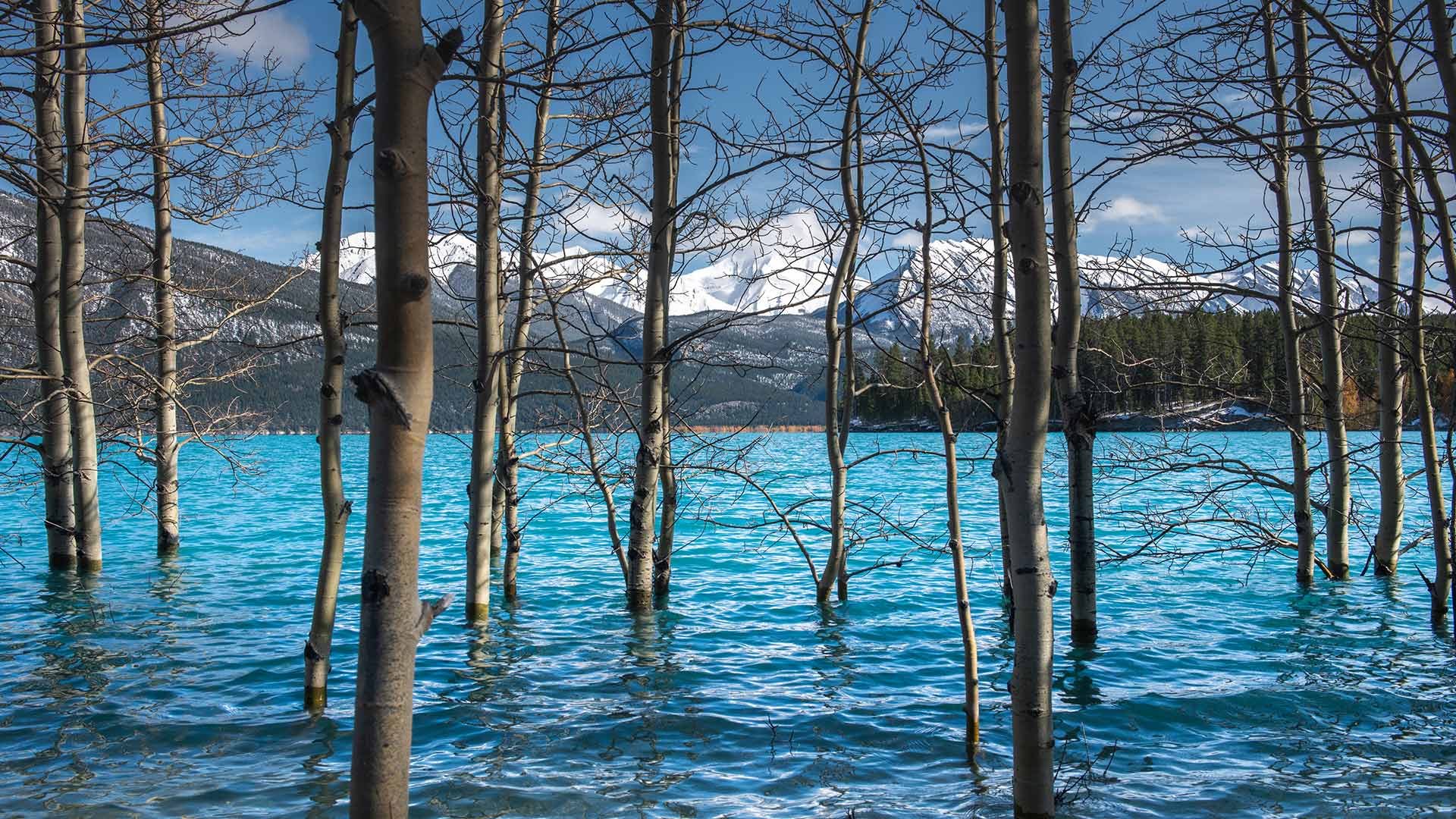
亚伯拉罕湖中的树,加拿大艾伯塔 Tree trunks in Abraham Lake, Alberta, Canada (© Coolbiere/Getty Images)
Lake and a reservoir
Today, we’re taking in views of Alberta’s largest reservoir – Abraham Lake. It was created in 1972 following the completion of the Bighorn Dam on the North Saskatchewan River. The dam was built by then Calgary Power Company, now TransAlta, to produce hydroelectric power. As seen here, Abraham Lake boasts a vivid shade of blue, further contributing to the breathtaking view with the mountains in the background. Of late, this gem in the Rockies has become a must-see for photographers every winter, for the emergence of the extraordinary frozen bubbles trapped under the lake. As the temperature drops, methane gas released from water-dwelling bacteria, forms into bubbles and freezes under the surface of the frozen lake. When the layer of ice on the lake is clear, the frozen bubbles can be seen and make for a remarkable spectacle.
湖和水库
今天,我们将欣赏艾伯塔省最大的水库——亚伯拉罕湖。它是1972年在北萨斯喀彻温河上的比格霍恩大坝完工后建造的。大坝由当时的卡尔加里电力公司(现为TransAlta)建造,用于生产水力发电。如图所示,亚伯拉罕湖拥有一个生动的蓝色阴影,进一步促进了以山脉为背景的惊险景色。最近,落基山脉的这块宝石每年冬天都成为摄影师们的必看之地,因为湖底出现了异常冰冻的气泡。随着温度下降,水中细菌释放出的甲烷气体形成气泡,冻结在结冰的湖面下。当湖面上的冰层清澈见底时,可以看到结冰的气泡,形成一种非凡的景象。
卡里佐平原国家纪念区的野花,加利福尼亚 Wildflowers in the Carrizo Plain National Monument, California (© Dennis Frates/Alamy)
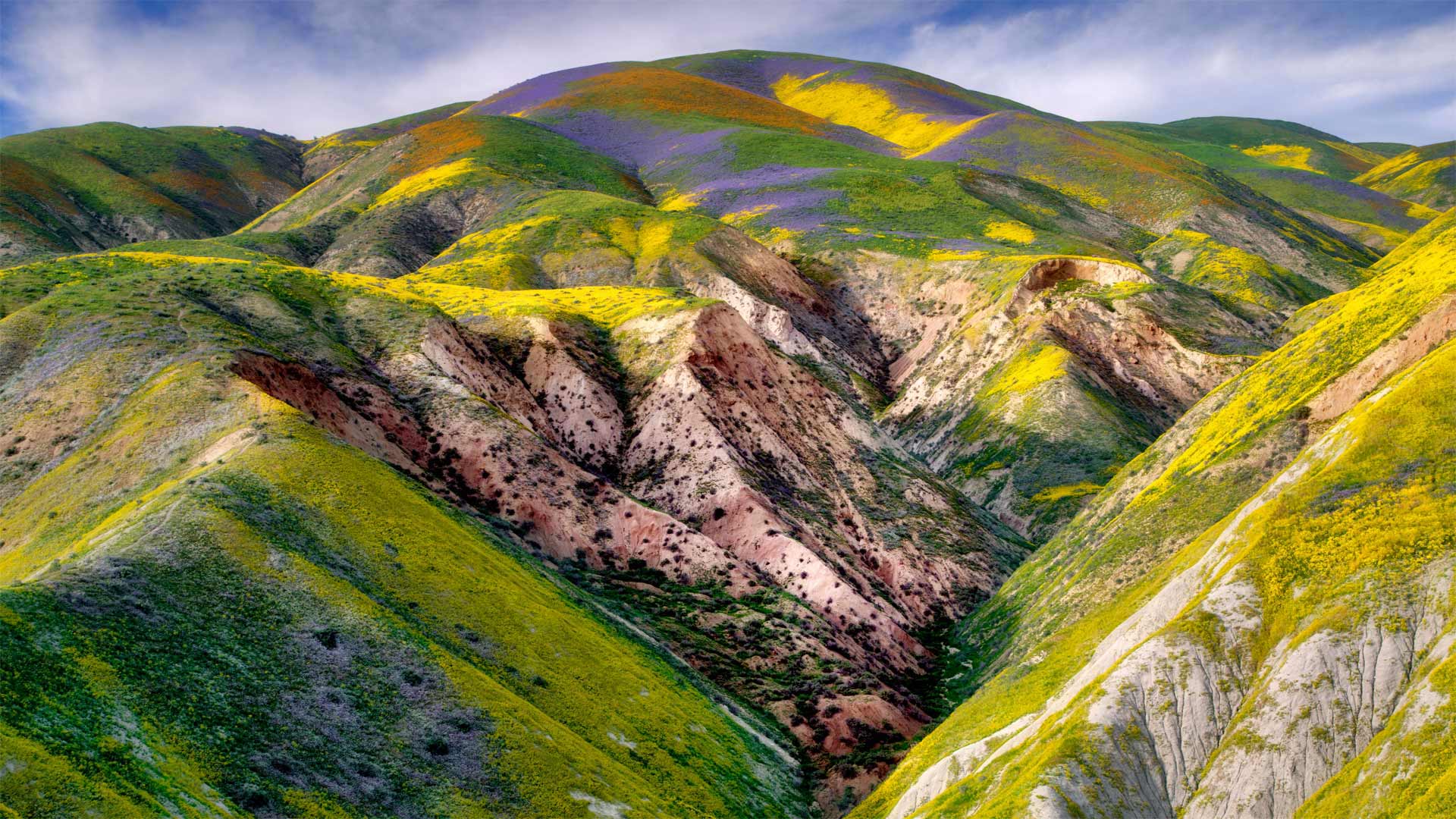
卡里佐平原国家纪念区的野花,加利福尼亚 Wildflowers in the Carrizo Plain National Monument, California (© Dennis Frates/Alamy)
Nothing plain about it
The Carrizo Plain National Monument is a unique attraction in California—not just because of its breathtaking, colorful views, but also due to its quiet, isolated feel. Just a few hours from Los Angeles, it covers almost 250,000 acres along the base of the Temblor Mountains, giving visitors a chance to escape the crowds and experience nature. In spring, wildflowers cover the hills and valley floor, creating the amazing scene pictured here. The area also features other diverse plant species, including several listed as threatened or endangered. Wildlife includes antelope and elk, as well as rare species such as the San Joaquin kit fox, the blunt-nosed leopard lizard, and the giant kangaroo rat.
这件事没什么明显的
卡里佐平原国家纪念碑是加利福尼亚独特的景点,不仅因为它令人叹为观止、景色丰富,而且由于它安静、孤立的感觉。距离洛杉矶仅几个小时,它就覆盖了近25万英亩的TEMBLOL山脉,让游客有机会逃离人群,体验大自然。春天,山间和山谷的地面上都是野花,创造了这里的惊艳景象。该地区还拥有其他多样的植物物种,包括被列为濒危或濒危植物的几种。野生动物包括羚羊和麋鹿,以及稀有物种,如圣约金基特狐狸、钝鼻豹蜥和巨大袋鼠。
大城历史公园中的帕喜善佩寺,泰国大城府 Wat Phra Si Sanphet, Ayutthaya Historical Park, UNESCO World Heritage Site, Ayutthaya, Thailand (© travelstock44/Alamy)
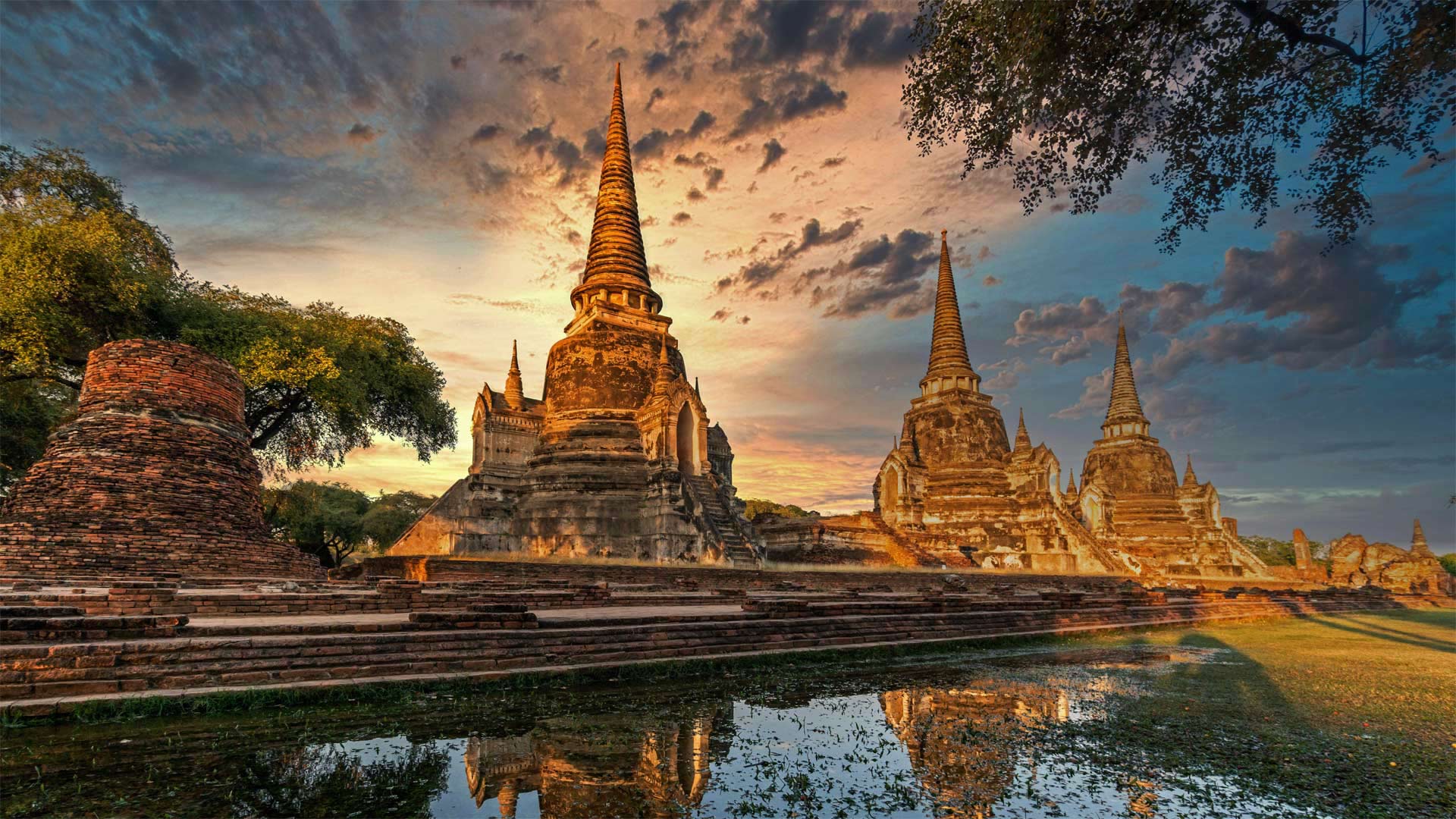
大城历史公园中的帕喜善佩寺,泰国大城府 Wat Phra Si Sanphet, Ayutthaya Historical Park, UNESCO World Heritage Site, Ayutthaya, Thailand (© travelstock44/Alamy)
Ruins of a royal temple
In present-day Thailand sit the ruins of the ancient kingdom that preceded it, Ayutthaya. Wat Phra Si Sanphet, shown here, was the holiest site in the capital of that kingdom, a royal temple containing a 52-foot tall, golden Buddha among other treasures. The first king of Ayutthaya, Ramathibodi I, ordered construction of a royal palace here in 1350. Nearly a century later, they palace was moved to a different location in the city and the former palace grounds were converted to a holy site.
The three structures shown are called chedis, bell-like structures, topped with miniature chedis on their roofs. After serving as the seat of the kingdom for 417 years, the capital city of Ayutthaya was sacked in 1767 by the invading Burmese, who melted down the copious gold of the temples and palaces, then set the buildings on fire. All but these three chedis were completely destroyed, and over time they fell into ruin. Restoration began on the chedis in 1956, but only the foundations of the rest of the complex remain.
皇家庙宇遗址
在今天的泰国,坐落着它之前的古老王国大城府的废墟。这里所示的瓦夫拉西桑菲特(Wat Phra Si Sanphet)是该国首都最神圣的地方,是一座皇家寺庙,里面有一尊52英尺高的金佛和其他珍宝。大城府的第一位国王拉马蒂博迪一世于1350年下令在这里建造一座皇宫。近一个世纪后,他们将故宫迁到了城市的另一个地方,原来的宫殿被改建成了圣地。
图中所示的三座建筑被称为钟形建筑,屋顶上覆盖着微型的钟形建筑。大城府在作为王国的首都417年后,于1767年被入侵的缅甸人洗劫一空,他们熔化了庙宇和宫殿的大量黄金,然后放火焚烧了这些建筑。除了这三个基德人以外,其余的人都被完全毁灭了,久而久之,他们就成了废墟。1956年开始对切迪斯进行修复,但只保留了建筑群其余部分的地基。
宇航员杰夫·威廉姆斯在国际空间站拍摄到的地球 Earth from the International Space Station, photographed by astronaut Jeff Williams (© Jeff Williams/NASA)

宇航员杰夫·威廉姆斯在国际空间站拍摄到的地球 Earth from the International Space Station, photographed by astronaut Jeff Williams (© Jeff Williams/NASA)
In orbit for Yuri's Night
Sixty years ago today at around 9 AM Moscow time, Yuri Gagarin became the first human to get a view of Earth from space (like this one captured from the ISS by astronaut Jeff Williams). With the famous utterance 'Poyekhali!' ('Off we go!'), Gagarin launched into low Earth orbit in his Vostok 3KA spacecraft, making history in less than two hours with a complete trip around the planet. Landing in rural Russia, he became an instant worldwide celebrity—that is, after convincing puzzled locals he was a comrade and not a space alien.
Of course, with elation came deflation: Gagarin's flight dashed NASA's hopes of making an American the first person in space. But the Soviets' success kicked the Space Race into high gear, setting the stage for a spate of US spaceflights and eventually that first trip to the moon. Now that competition in spaceflight is less bitter, 'Yuri's Night' is observed today by astronomy lovers of all nationalities, celebrating how space exploration can unite the world. It's even a double holiday now: The first US Space Shuttle mission coincidentally launched on Yuri's Night in 1981.
在尤里之夜的轨道上
60年前的今天,莫斯科时间上午9点左右,尤里·加加林成为第一个从太空看到地球的人(就像宇航员杰夫·威廉姆斯从国际空间站拍到的这张照片)。用著名的“Poyekhali!”(‘出发!’)年,加加林乘坐他的vostok3ka飞船进入近地轨道,在不到两个小时的时间内完成了绕地球的完整旅行,创造了历史。在俄罗斯农村登陆后,他立刻成为了世界名人,也就是说,在说服困惑的当地人他是同志而不是外星人之后。
当然,随之而来的是通货紧缩:加加林的飞行粉碎了美国宇航局让美国人成为太空第一人的希望。但苏联的成功将太空竞赛推向了高潮,为美国的一系列太空飞行以及最终的首次月球之旅奠定了基础。如今,航天领域的竞争已不那么激烈,各族天文爱好者今天都在庆祝太空探索如何团结世界。现在甚至已经是双休日了:1981年尤里之夜,美国第一次航天飞机任务巧合地发射升空。
吉野山,日本奈良 Mount Yoshino, Nara Prefecture, Japan (© Sean Pavone/iStock/Getty Images Plus)
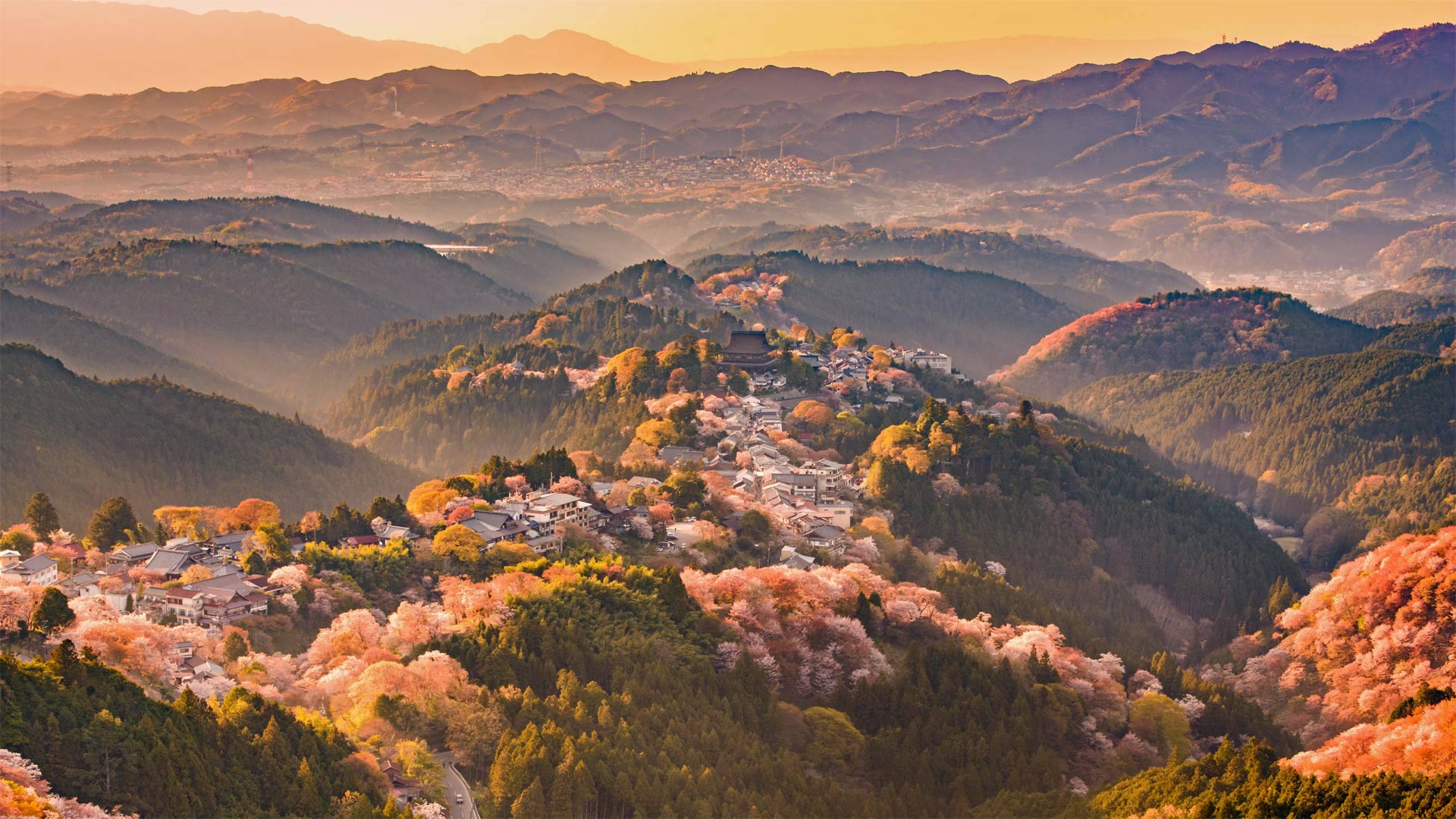
吉野山,日本奈良 Mount Yoshino, Nara Prefecture, Japan (© Sean Pavone/iStock/Getty Images Plus)
The mountain of 30,000 sakura
Mount Yoshino ranks as one of the best places in Japan to immerse yourself in the spring cherry blossom season. Over 30,000 flowering Japanese cherry trees, or sakura, grow in four main groves on the hillside. Because the trees, some planted over 1,300 years ago, grow at different elevations, the cherry blossom front gradually moves up the mountain in a slow, fragrant wave as the season progresses. Peak bloom usually arrives between early and mid-April. Most years, crowds wander through the town of Yoshino, visiting its traditional temples and shires, before admiring the profusion of cherry blossoms, a custom known as hanami. Of course, we can practice hanami virtually with pictures. But if you're lucky enough to have a blooming cherry tree near you, we encourage you to pause and breathe the moment in.
樱花山
吉野山是日本最适合在春天樱花盛开的地方之一。在山坡上的四个主要小树林里,生长着3万多株开花的日本樱花树。因为这些树,有些是1300多年前种植的,生长在不同的海拔高度,樱花阵面随着季节的推移,以缓慢而芬芳的波浪向山上逐渐移动。开花高峰期通常在4月初至中旬之间。大多数年,人们在吉野镇漫步,参观传统的寺庙和山寨,然后欣赏樱花盛开的景象,这是一种被称为花美的习俗。当然,我们可以用图片来练习花美。但如果你有幸在你身边有一棵盛开的樱花树,我们鼓励你停下来呼吸一下。
Hovenweep国家纪念碑的方塔,犹他州 Square Tower Group in Hovenweep National Monument, Utah (© Brad McGinley Photography/Getty Images)
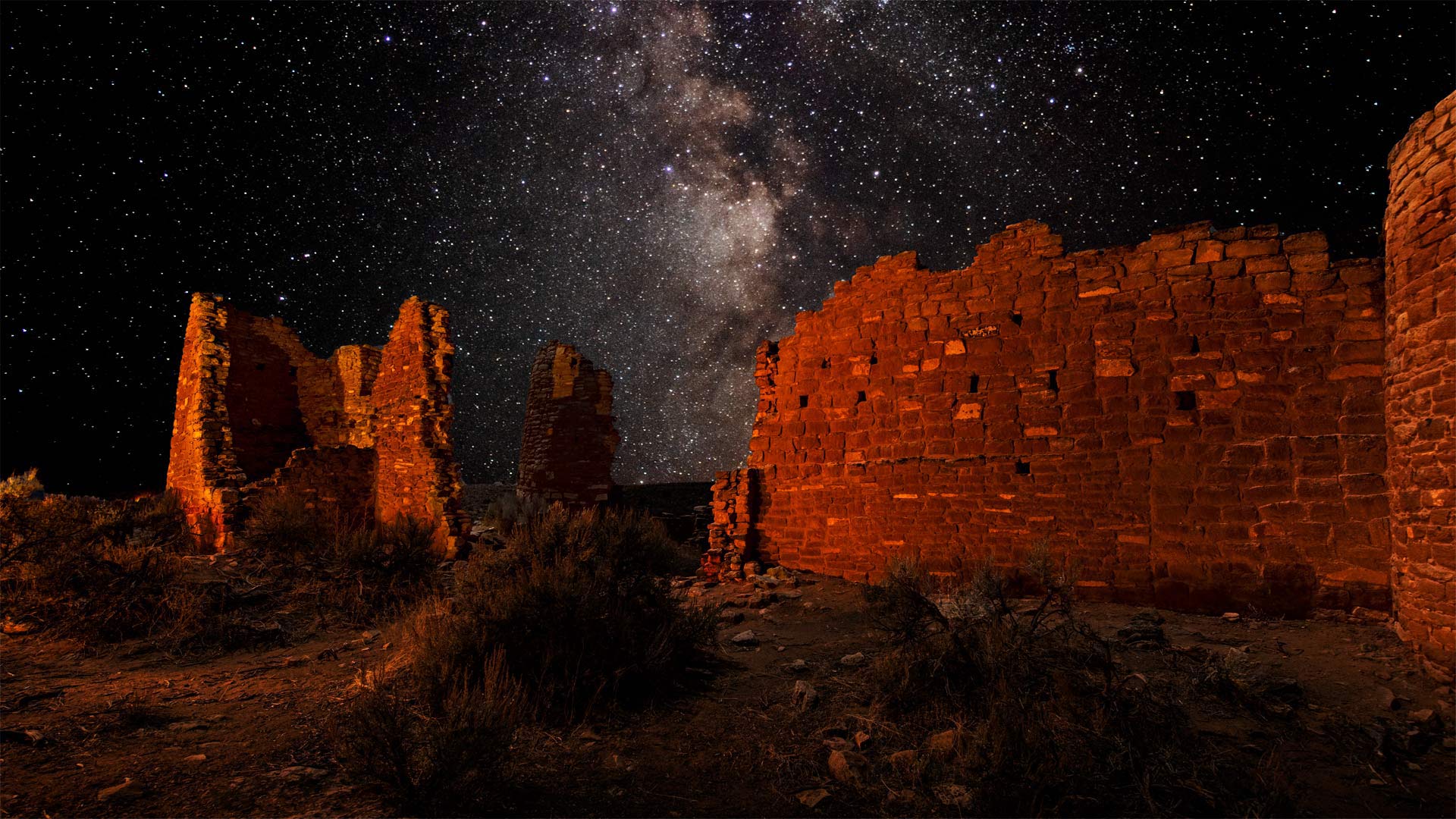
Hovenweep国家纪念碑的方塔,犹他州 Square Tower Group in Hovenweep National Monument, Utah (© Brad McGinley Photography/Getty Images)
A timeless view of the night sky
The bright sweep of the Milky Way is especially vivid amid the mesas, canyons, and prehistoric towers of Hovenweep National Monument. Straddling the southern Colorado-Utah border, Hovenweep is so remote that almost no artificial light disturbs the view of star-filled skies. The dazzling nightscapes are little different from those seen by the Ancestral Puebloans who built these towers. They were a farming culture who first settled in the area roughly 1,100 years ago. By the late 1200s they numbered around 2,500 people and had built these and other structures in six different villages. Archaeologists offer several theories to explain the use of the buildings. Some may have been defensive fortifications, storage areas, homes, or any combination of these. But researchers suggest that the tower called Hovenweep Castle, seen here, was almost certainly used as a celestial observatory.
That's why we're visiting Hovenweep during International Dark Sky Week, which lasts through the weekend. Organizers of the event, held during the week of the new moon in April, encourage us to observe the beauty of the night sky without light pollution. It's easy to do here—in 2014, the International Dark Sky Association named Hovenweep a Dark Sky Park, offering protections that preserve the extraordinarily pristine skies that once shone down on the Ancestral Puebloans.
永恒的夜空
在霍文韦普国家纪念碑的台地、峡谷和史前塔楼中,银河系的明亮一扫显得尤为生动。横跨科罗拉多州和犹他州的南部边界,霍文韦普非常偏远,几乎没有人造光干扰满天星空的景象。令人眼花缭乱的夜景与建造这些塔的普埃布劳恩斯祖先所看到的几乎没有什么不同。他们是一种农业文化,大约1100年前第一次在这个地区定居。到12世纪末,他们大约有2500人,在六个不同的村庄建造了这些和其他建筑。考古学家提供了几种理论来解释这些建筑的用途。有些可能是防御工事、储存区、住宅,或这些的任何组合。但研究人员认为,在这里看到的这座名为霍文韦普城堡的塔几乎肯定是用作天文观测站的。
这就是为什么我们要在国际黑暗天空周期间参观霍文韦普,这一周将持续到整个周末。这项活动的组织者在四月的新月周举行,鼓励我们在没有光污染的情况下观察美丽的夜空。2014年,在这里很容易做到,国际黑暗天空协会将霍文韦普命名为一个黑暗天空公园,提供保护,保护曾经照耀在普韦布洛祖先身上的异常原始的天空。
